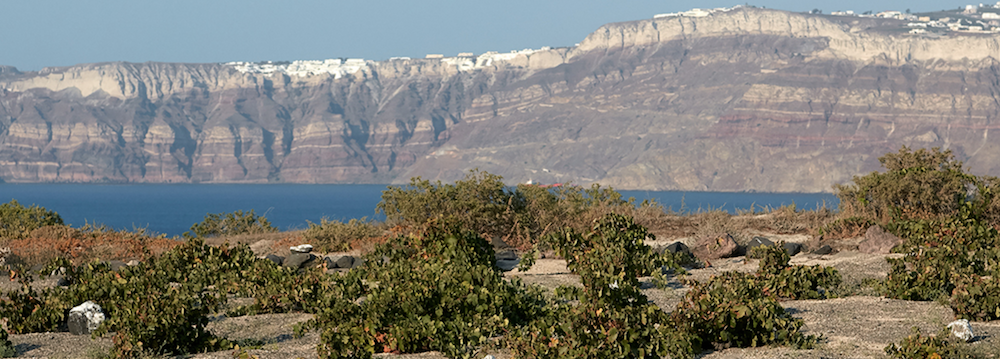‘Minerality’. Probably the wine word most likely to cause excitement, fury and frustration in wine circles today. And, as it turns out, one that will most certainly fill a room with wine journalists. As was the setting for a conversation and tasting between Steve Daniel and Jamie Goode held by Hallgarten & Novum Wines in early January.
The genesis for the tasting came from the fact that Steve Daniel and his team of buyers had begun noticing that the word ‘mineral’ was appearing with increasing frequency on all their wine notes. On a mission to find out why, they asked the winemakers who provide wines for their collection as to what ‘minerality’ is. Some described it as a texture, some described it as a ‘coldness’ in their mouth, and others talked directly about the taste of the very rocks if you licked them. The goal with this tasting was to explore what a room full of wine writers thought, with a tasting of distinctively ‘mineral’ wines in situ.
“For me it is almost a feeling, I get a feeling of minerality in the wine,” said Steve Daniel, the wine buyer for Hallgarten & Novum Wines and a prolific buyer in the UK for many years.
“The brain is doing something very interesting in creating this unified perception from our senses, and we try to describe them in words,” commented Jamie Goode, “as wine writers we don’t understand how abnormal it is for us to do it.”
“Minerality didn’t exist in the wine lexicon until the late 1980s,” he added, “minerality has come into the wine lexicon fairly recently… I use the term a lot but it is a term that has come into quite a lot of criticism.”
Goode described the ‘literalist’ perspective, that the perception of the rocks in the soils translate into the palate versus the idea that mineral is either something you smell (often as reductive, match-struck aromas) or something you feel in the palate.
The first wine, in the line-up of wines which Daniel believes display minerality, came from Idaia Winery and a high altitude vineyard in Greece’s Heraklion region. Made from the Vidiano grape variety, the wine was floral and delicate on the nose but had a mouthwatering and grippy finish, which Daniel attributed to the high calcium content in the soil.
The second wine came from what we might consider one of the holy grail’s of minerality — Etna — which was followed by another volcanic wine, a Listan Blanco from the Canary Islands. “With volcanic soils, I think I get a gut feel with it…” explained Daniel. “I also think I get a gut feeling with calcium-based soils.”
“With granite, I feel a brightness in the wine,” added Goode. “There is active root uptake and passive root uptake. it would be really interesting to have more research into this.”
The lack of research into the impact of the soil on the way a wine tastes was a recurring theme in the conversation, and one which certainly merits more investigation in the future. The impact of the soil was one of the hot topics under debate in relation to the potential ‘minerality’ of a wine, but equally as important was the argument for winemaking.
“A common theme for me with wines that express minerality have reductive winemaking without any oak,” said Daniel, “because the oak can get in the way.”
Almost all of the wines did indeed show reductive winemaking techniques which Daniel said he felt was a growing trend, and one which in turn would help us to see more ‘mineral’ wines in the future, and idea with which Goode concurred.
“Winemaking and what we look for in wines has changed” surmised Goode. “The older I get, the more I’m into non-fruit components in wines.”
In a similar vein, much discussion was had about what grape varieties best translate ‘minerality’, for which Daniel made the argument that the least aromatic varieties are the ones that best translate or show minerality. A murmur of disagreement fell across the room when he said that he no longer finds any minerality in Chardonnay, even Chablis. And that Riesling, with its intense aromatics and residual sugar levels, often hides its more mineral qualities.
Although there was no common consensus during the conversation on which varieties showed more ‘minerality’, the tasting itself certainly did put light on lots of different varieties which rather than boasting their own varietal characteristics mainly shed light on their place. Notably more so in the case of white wines, rather than red wines — perhaps because of their lesser fruit concentration, or lesser tannin component.
For me the stand out wine of the day was the Assyrtiko from Santorini by Gaia Wines: mouthwatering, saline and quite hard not to describe as mineral. The 80-year-old vines’ proximity to the sea probably helped with this wine’s perceived minerality, as sea salt encrusts the grapes which are barely a couple kilometres from the sea. Which for me begged the question as to whether minerality really is a new word or concept… Afterall, even the Romans used to add sea water to their wine.


